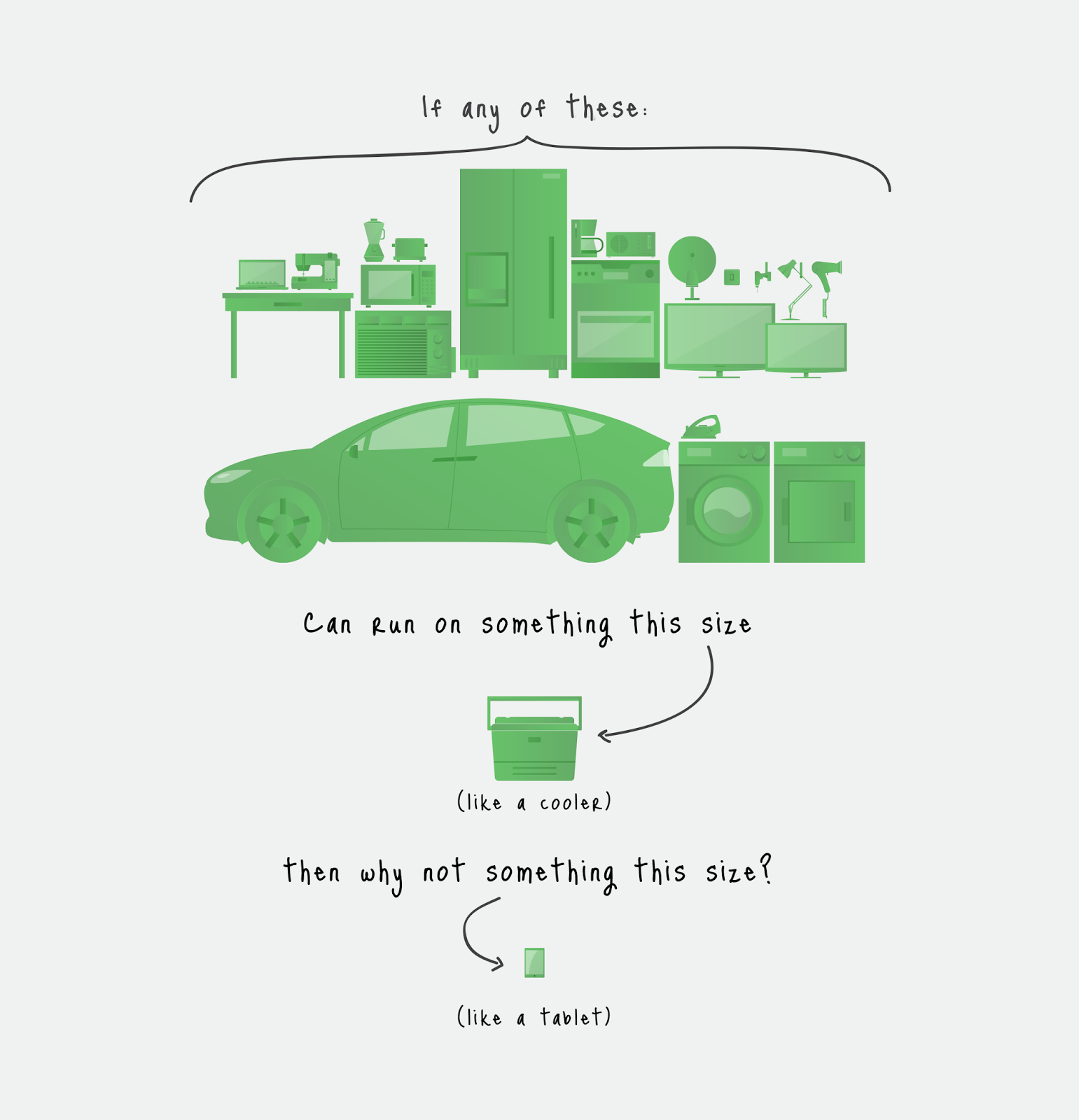Little Box Challenge opens for submissions July 22 2014
These days, if you’re an engineer, inventor or just a tinkerer with a garage, you don’t have to look far for a juicy opportunity: there are cash prize challenges dedicated to landing on the moon, building a self-driving car, cleaning the oceans, or inventing an extra-clever robot. Today, together with the IEEE, we’re adding one more: shrinking a big box into a little box.
Seriously.
Of course, there’s more to it than that. Especially when the big box is a power inverter, a picnic cooler-sized device used to convert the energy that comes from solar, electric vehicles & wind (DC power) into something you can use in your home (AC power). We want to shrink it down to the size of a small laptop, roughly 1/10th of its current size. Put a little more technically, we’re looking for someone to build a kW-scale inverter with a power density greater than 50W per cubic inch. Do it best and we’ll give you a million bucks.
There will be obstacles to overcome (like the conventional wisdom of engineering). But whoever gets it done will help change the future of electricity. A smaller inverter could help create low-cost microgrids in remote parts of the world. Or allow you to keep the lights on during a blackout via your electric car’s battery. Or enable advances we haven’t even thought of yet.
Either way, we think it’s time to shine a light on the humble inverter, and the potential that lies in making it much, much smaller. Enter at littleboxchallenge.com—we want to know how small you can go.

Seriously.
Of course, there’s more to it than that. Especially when the big box is a power inverter, a picnic cooler-sized device used to convert the energy that comes from solar, electric vehicles & wind (DC power) into something you can use in your home (AC power). We want to shrink it down to the size of a small laptop, roughly 1/10th of its current size. Put a little more technically, we’re looking for someone to build a kW-scale inverter with a power density greater than 50W per cubic inch. Do it best and we’ll give you a million bucks.
There will be obstacles to overcome (like the conventional wisdom of engineering). But whoever gets it done will help change the future of electricity. A smaller inverter could help create low-cost microgrids in remote parts of the world. Or allow you to keep the lights on during a blackout via your electric car’s battery. Or enable advances we haven’t even thought of yet.
Either way, we think it’s time to shine a light on the humble inverter, and the potential that lies in making it much, much smaller. Enter at littleboxchallenge.com—we want to know how small you can go.
